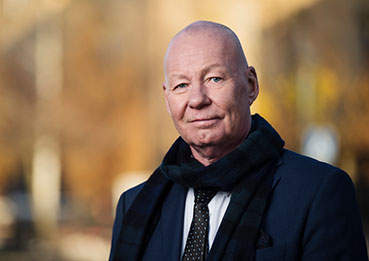An interdisciplinary approach is often the way forward to find solutions to complex problems where a number of different aspects are highlighted based on each researcher’s disciplinary domicile.
At the annual Baltic Sea Seminar held a few weeks ago, researchers presented studies showing the environmental problems of the Baltic Sea, but also different solutions to save the sea. These included everything from recreating spawning grounds for predatory fish, using sensor technology for monitoring, wind-powered modern ships and, not least, developing aquaculture and so-called blue food.
When the presentations were linked together, it was clear how different scientific disciplines, each in their own way, contribute to understanding the complex marine environment in the Baltic Sea, the relationship between the marine environment and activities on land and how new technology can be used to create new sustainable solutions that also provide great added value to society.
In medical technology, KTH and KI jointly run MedTechLab and within this collaboration, several innovative and scientifically successful projects are conducted in collaboration between KTH, KI and clinical activities. One example involves technology for imaging cancer tumours so that they can be detected earlier and with better precision by doctors. Technology development, diagnostics and medical science need to work together.
Another example is the mapping of nerve impulses to eventually influence nerve pathways and cure diseases such as rheumatism or other inflammatory diseases through new medical devices. Mathematics, engineering, medical science and clinical activities Mathematics, engineering, medical science and clinical activities are involved in the project to contribute to the common goal of better health and quality of life through more precise medical treatment.
Last week the Franco-Swedish Research Days focused on nuclear energy. Here, too, many disciplines are working together to create the conditions for the nuclear reactors of the future, which will be modular and safer than today’s systems. This also includes legislation, license assessments and cooperation between authorities as an important part of the problem complex that needs scientific contributions to improve society’s long-term energy supply.
It is easy to feel a strong sense of confidence in the ability of universities to contribute to the climate transition and a better society when you see progress that is based on truly interdisciplinary working methods where deep scientific disciplinary expertise is developed and utilized. For KTH it feels almost like a badge of honor to be able to work in this way.

